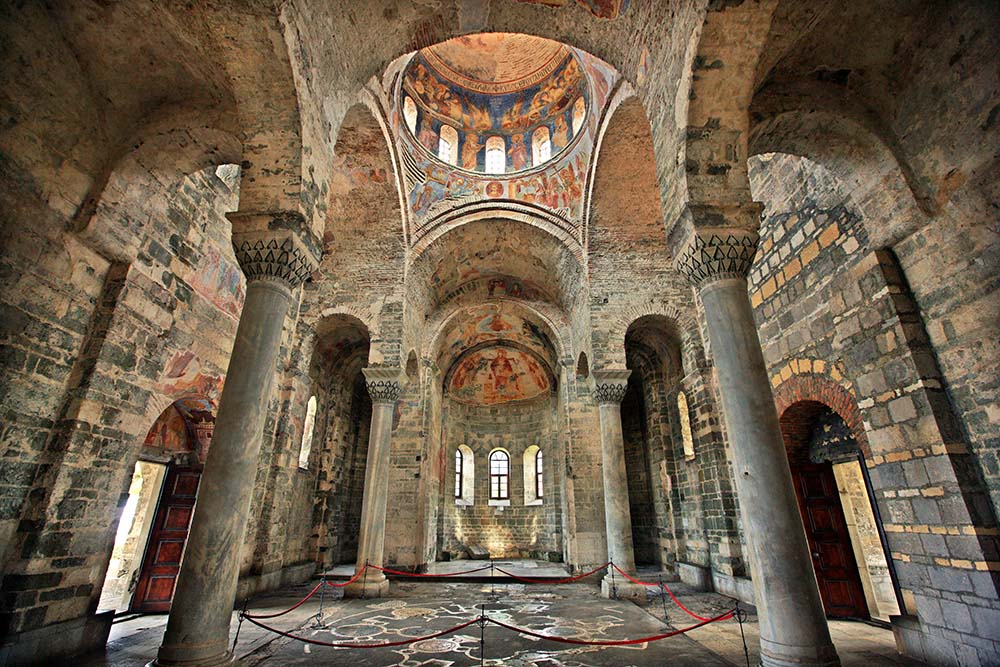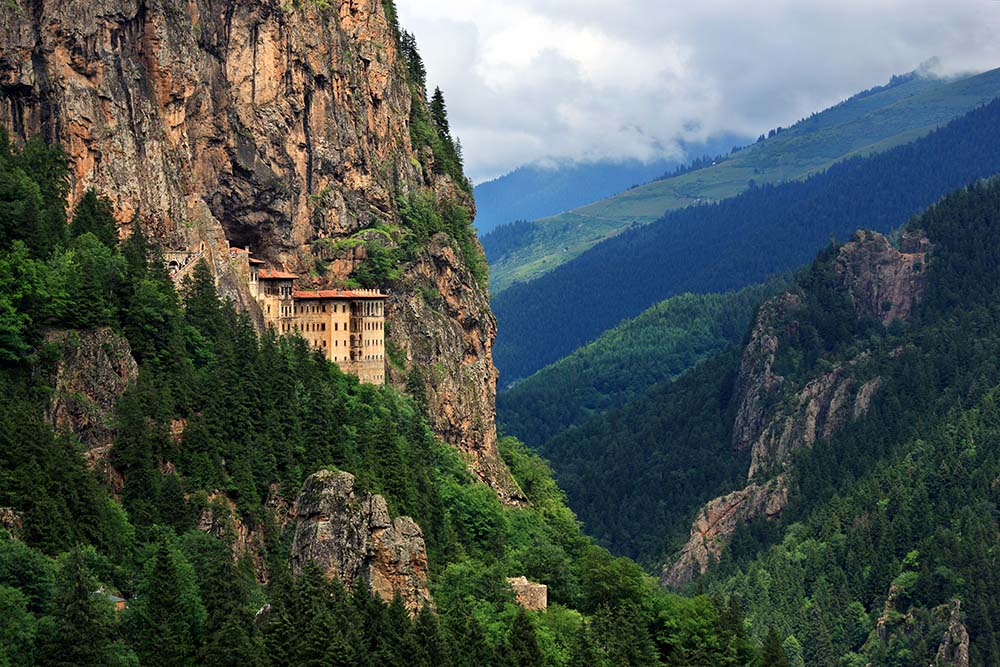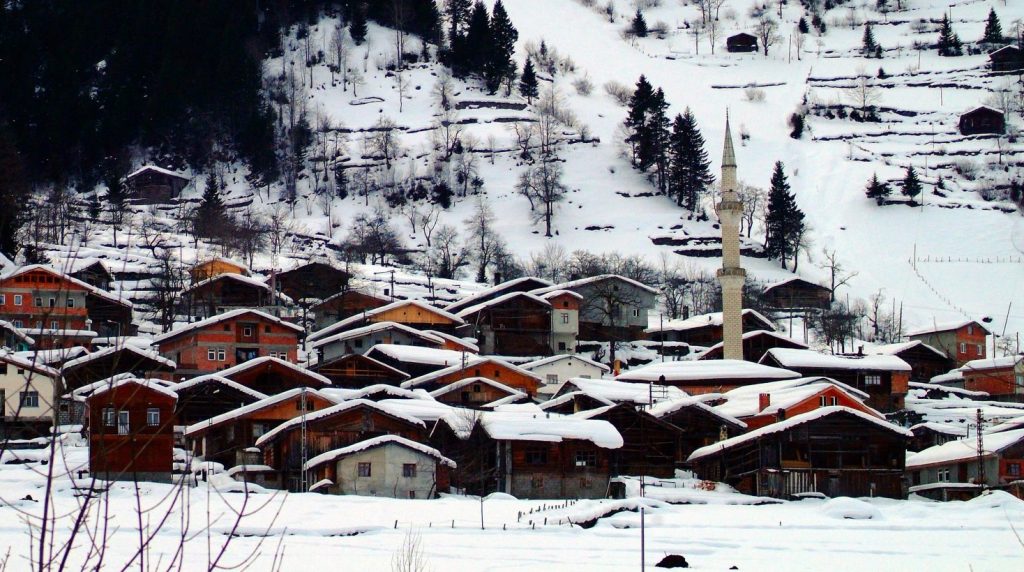Trabzon, a place that reflects the unique nature and historical experience of the Black Sea Region, is one of the most important cities in the region. This city, a neighbor to Giresun, Rize, Bayburt, and Gümüşhane, is made up of mountains. The mountains in the southern part reach to shores of the Black Sea. The height of these peaks reaches about 2,000 meters. When you look at the city from the shore, the settlements extend towards the mountain, almost like rising in a layered terrace. Zağnos and Kuzgundere are the known streams of Trabzon, and the space between these streams resembles a high plateau.
The city, which has a 4,000-year history, witnessed Byzantine and Roman periods. Yavuz Sultan Selim had governorship back then, and Fatih Sultan Mehmet conquered after a great struggle to help Trabzon put its seal on history. The city has an important place in history and today, you can see very old tracks of history here, including churches, mosques, natural sites, and monasteries. It is an important city where you can do nature sports, camp, and go trekking.

Hagia Sophia (Ayasofia) church
Cuisine
Trabzon is separated from Anatolian culture in both architectural and cultural terms with its lifestyle and plateauing techniques. This diversity also makes Trabzon cuisine rich with different flavors. Corn, black pepper, and anchovies are typical flavors. Numerous foods can be made with these ingredients, from bread to soup varieties. Kuymak (made of corn flour), anchovy bread, haçapur, guliya, stuffed grape leaves, roasted-pickled beans, poached anchovy, and kaygana are local delicacies.
Places to Visit
Trabzon, which features traces from the ancient Roman period up through the Ottoman period, was a commercial center in the region. In the Middle Ages, this city was the capital city of the Greek Empire. Historical buildings include Vazelon Monastery, Kızlar Monastery, Kaymaklı Monastery, Hagia Anna, Hagios Konstantinos, Gülbahar Hatun Mosque, Trabzon Museum, Atatürk Mansion, and Çakıroğlu İsmail Ağa Mansion are some of its historical structures.

Famous touristic place in Trabzon, Uzungol
The walls and the Trabzon Castle are old buildings of the city. A large part of these walls have lasted up to today from as far back as the Roman period. You can see the city walls from the hills behind the city to the seaside. The Sumela Monastery is among the most spectacular structures of the Central Black Sea. The monastery, located in the Altındere Village of Maçka district, was built on a steep rock. This mysterious place on the skirts of Karadağ is known colloquially as Mother Mary. The structure is 300 meters high from valley.
There are also museums in the city where you can get clear information about the history, culture, and traditions of the Black Sea Region and of Trabzon. Trabzon Hagia Sophia Museum, Atatürk Mansion, Cevdet Sunay Museum, and Trabzon Museum are all important. When you say “tourism” in regards to the Black Sea region, it does not necessarily mean the sea, sand, and sun; instead, it refers to plateaus. Plateaus are wonderful natural wonders, and plateau festivals happen every year. People generally go to plateaus for picnics, and “horon”, an ethnic dance.

Hagia Sophia (Ayasofia) church
Şolma Plateau, Haçka Obası Plateau, Plum Plateau Garest Plateau, Şekersu Plateau, Sultan Murat Plateau, Lapazan Plateau, and Halsizen Plateau are all worth seeing. You should do nature exploration in the mountains, which features different beauties on every corner. Sera Lake, Çal Cave, Sürmene, Maçka, Altındere Valley, and Çankaya absolutely should be visited. Uzungöl is also a famous mountain resort near Lake Uzun.
Black Sea people are known to be joyful and active. This trait is deeply rooted, which gives a certain color to life there and helps diversify the region from urban cultures. Horon is a passion for the locals. When the drum and the zurna play together or only the kemancha is played, feet can not resist the rhythm. Then you can find yourself in a magical environment. It is not true to speak of the existence of a folk dance as fast and frenzy as horon.

Lovely Trabzon village under snow
Women and men’s local dresses are known by many different names. “Yaşmak” (yashmak) is a kind of cover for women and it has patterns and sequins. Tasseled yaşmak is used by a new bride or an engaged woman. Kukul is tied on the yaşmak. Old ladies generally wear scarf, called çömber. Calico or silk shirts are decorated with yokes, or inlaid and flowery Turkish motifs. Fistan is also a woman’s dress which has traditional and local details. This local dress which falls to knee level consists of vivid colors such as blue, pink, and red. Salwars also have the same characteristics as other clothing products. Men have headwear that called kabalak. Shirts called mintan are made from white silk, and their collars are usually upright and cuffed. Waistcoats are worn over the shirt, and it contains plenty of buttons.
How to Get There
The city is accessible via Black Sea Coastal Road. There are also daily flights from big cities.
